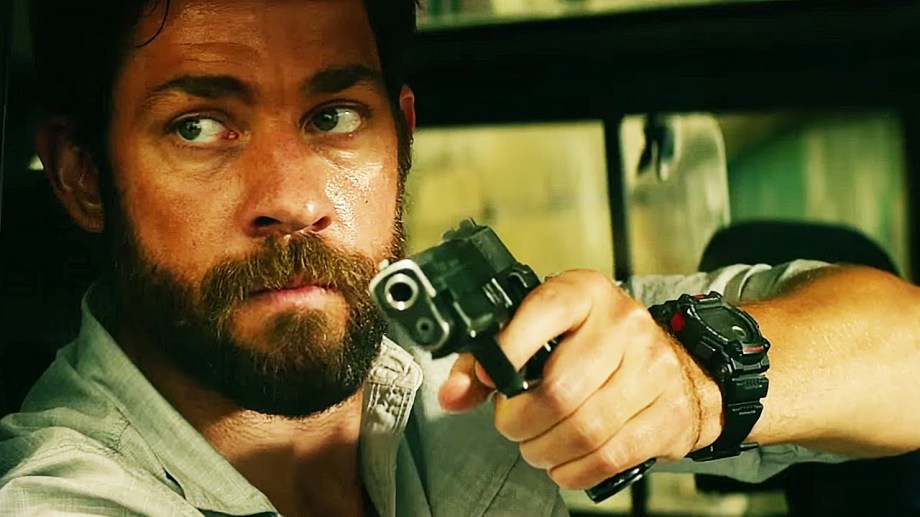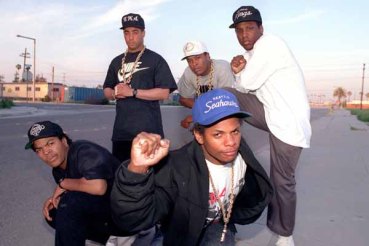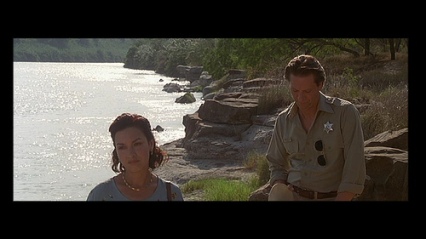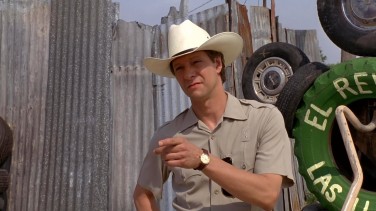Joe Swanberg recently released ‘Digging for Fire.’ It is his most realized and satisfying work yet. It takes actors and even characters from these reviewed films. Its connections include a dialectic of lifestyle and choice, and another thread has connections of natural environment (Los Angeles and its ghosts), human destiny and love. Plus Orlando Bloom is used in a favorable way. Not bad for his first big (er) budget film.
Joe Swanberg was considered one of the key players in the early to mid 2000’s Mumblecore movement– micro budget, cinema-literate, often funny films where the drama mostly arises from friends hanging out and the awkward struggles of sex. Credit where it’s due: Two movies were put into my hand by former OKC.NET editor Liz Drew and her boyfriend Randall Heyer, Joe Swanberg’s Hannah Takes the Stairs–which introduced us to Greta Gerwig and was unique in indie film for its sexual explicitness– and Mark Duplass’s Baghead. I returned the movies, unwatched, as other flurries of life hit. Then one year ago Mark Duplass’s The Puffy Chair came up in conversation. I watched it, and laughed the laughs of the just. I turned into a delightful person for the entire movie. What any movie should do to we wretches.
Duplass and Swanberg, in their early creative spurts, share what is missing in most products masquerading as funny these days. They have an incisive comic timing and a refreshing Who Cares spirit that’s a touch off kilter. They like to watch people define themselves by their actions ,as opposed to what they say (see Happy Christmas & Drinking Buddies). The motif in recent comedies (from fledgling stand-up comics to This is Forty) is to make too much happen in forcefully “funny” dialogue, as if making comedy happens by virtue of the comedians’ violent desire to do comedy. Behind the lens of Swanberg’s movies is an acquired taste that nevertheless knows where the right place for a joke is– in Drinking Buddies a gag with one of the minor characters is built up piece by piece until a pivotal moment at the end of the movie where the most is at stake for the main character and the joke falls: the force of the laugh has been worked for all movie.
Swanberg’s project is necessarily limited in its ambitions, an indie lo fi thing, and when it comes to love scenes, he seems to be too tickled by white people awkwardly stumbling into the sexual experience. For that rare director who wants to see different angles into sex, one wishes he’d be less fussy– but these are the characters he was given. However, it’s without a doubt Swanberg is a rare personality who artfully sees the funny in the kind of situations you find yourself in while trying to get somewhere else. The aura of living life reflects the nuances in Swanberg’s films.
There are four Swanberg films now available on Netflix instant and all are worth a look.

All the Light in the Sky
Jane Adams is an actress of intrigue. A soul singer’s waitress muse in Wonder Boys, a pimp to Thomas Jane in an unjustly short-lived HBO show (Hung). In the former film she’s given Marilyn Monroe’s jacket. Joe Swanberg has singled her out to be the center of gravity for this essentially experimental film. It’s an obscure and a “duh!” choice. She is really interesting, of course. And as is the destiny for some interesting and independent women, she is living alone. She chooses a gorgeous, tiny and sporty pad, a house on a ledge overlooking Malibu beach; it’ a slice of the acting artist’s life. She goes to sleep listening to lectures on iTunes.
It’s a movie that defies any expectation. If there is a main narrative thread it’s when Jane’s niece comes to visit. This opens the door to a generational comedy or a ‘What Does it All Mean, Growing Older’ kind of story. Instead, an understated zen shows in Swanberg’s approach, compared to Noah Baumbach’s wide open anxieties in Greenberg and While We’re Young. Here, the millennials bring a stylistic innovation; their computer Face Timing and i-Phone footage, a little more pixelated than Swanberg’s, add a collage effect and a percussive current to Swanberg’s meandering method. Narratively, Jane deals with aging by owning it, and naturally pursuing activities and relationships that keep her life interesting. One of these pleasant friendships results from her interviewing an environmental engineer for a role. She learns how data about sun energy is collected and sent to solar entrepreneurs and companies. She visits the Earth Stations (Pyranometers) in the desert that measure the dome of the sky. After study, the engineer talks of his divorce.
The other interaction is with her neighbor Rusty (Larry Fessenden), a layabout surfer. In Swanberg’s telling Rusty is a man of the beach land. He sees its cycles and ebbs and flows as clearly as a Claude Levi Strauss sipping Fat Tire:
“ And then one day all these houses are going to be gone. The sea level here is getting higher every year. All these, talk about Castles Made of Sand. It’s great for the moment, but uh, it’s funny, these people bought their dream houses. They thought they were putting their nugget away.
“And uh, look at these pylons. It’s just going to erode. It’s just part of the folly of it all.
“But, you know, I got my place 5 years ago. Every day is, uh, fuckin’ awesome. But if you were thinking you were cashing in, then you’d have to think again. All this will be gone in 10 years.”
Q: That doesn’t scare you?
A: “Then I’ll just move somewhere else. I’m done fretting over it. Spent a lot of time trying to change people’s mind and it just doesn’t work. So I’m just going to enjoy the ride. Go to each beautiful place and watch it crumble away.
“But, look at this. Just live in the moment, It’s spectacular.”
The first scene is Jane stark naked putting on a wet suit to go surfing. The matter-of-fact vision of the female form completing a mundane task establishes Swanberg’s style as a filmmaker: a kind of humorous, not unsexual, philosopher. Interested, but at a distance.
In another shot which could’ve been caught by accident, Jane Adams stares at the floor and ocean, seeming to lightly ponder some heavy existential situation (the subtext being the precarious, difficult career of a working actress). Swanberg’s camera drifts around, waiting for a brief accidental revelation in her face.
Swanberg tells Bret Easton Ellis:
“ My favorite moments are doing the least. Not attempts to fill every silence with dialogue, or cracking jokes that have set ups and then land. It’s just the ability to observe people hanging out, which for me has always been thrilling. When you do it it’s like capturing a rare butterfly or something like that… There’s this moment where, like, ‘oh they forgot the camera was there.’ There’s some sort of real interaction.”
Perhaps because Swanberg isn’t trying too hard, perhaps because the unique spirit of Jane Adams, All the Light in the Sky is the director’s most poetic work.

Happy Christmas
Happy Christmas doesn’t brazenly lift itself above the fray of mid-level independent cinema immediately, but on second viewing for me it communicated its unique joi de vivre. The sly way the director puts his characters into situations, the music they play for each other and how a guy responds to a new song (that’s Joel Alme), the way a girl says “chunk of money” cartoonishly with her hands reminded me of the way many of my friends talked in our 20s.
The situation is Jenny (Anna Kendrick) has broken up with her boyfriend and in her funk she moves in briefly with her brother Jeff (Joe Swanberg) and his wife Kelly (Melanie Lynskey). Jeff thinks it’s a good idea because it can free Kelly up for some errands. But it becomes clear on the first night that they’ve invited a party monster. Jeff has to go pick up his sister, passed out on the floor of a party, unresponsive to her friend/driver Carson (Lena Dunham). The next day they call in a baby sitter. In a suave reaction shot, we see Kelly’s face when the babysitter Kevin (Mark Webber) asks for Jenny’s number.
Chicago is a distinct character in the movie, mostly by the filmmaker’s limitations. A place for writing for the struggling novelist in Kelly is no doubt a production space Swanberg and his buddies already had access to. The house they have has an intricate tiki bar down in the basement, a brilliant relic of post-war life when a WWII vet enjoyed national prosperity enough to build such things in their basement. This will become the party monster’s lair. The lofts, the empty bars, the cold weather and half full pints of beer spice, the marijuana couches all inform the movie as it does the filmmakers’ lives, where Swanberg made many of his mumblecore pictures and his wife taught school.
This director, like his character Jeff, must have a serene temperament. It may prevent him from “swinging for the fences” on a film, but it makes for interesting storytelling anyway. This movie could have been a cautionary tale or moralizing in its treatment of Jenny’s aimlessness, her coldness and alcoholism. But over time it assuages her coldness with moments of human warmth from Melanie. And Swanberg’s narrative swerves away from drunkenness to creation, a kind of inquiry into what what precisely, mysteriously certain self destructive activities can give to a marriage life (or that married person’s art). She gets Jeff high and he goes up to make great love to his wife. It’s Jenny’s idea that Melanie write a romance novel to fund future literary projects. In writing the trash book, Melanie’s writer’s block is broken. However, there are still some practical dangers that Jenny’s lifestyle poses.
In addition to funny situational comedy, the director is interested in the differences between domestic life and the creative life. He wants to know how drink and misbehavior can embolden art and life, while throwing good things into chaos too. This curiosity prevents his story from ever getting boring and gives us a sense of the present day filmmaker’s waking life, and the effect, if one has a taste for this kind of meandering work, can be exciting.

Drinking Buddies
My guess is there was a wider audience for such closely observed and slice-of-life relationship movies when Paul Mazursky was making them– I don’t say this having seen his films but for Swanberg thanking him in the credits.
If the audience for Drinking Buddies is micro, then this, Swanberg’s 14th feature, shows growth in the interest of pro actors. In the entertainment industry not every actor gets to live large with a part in the next Marvel movie, leaving many actors with an open schedule and a desire to do the kind of thing Swanberg does: subtle exchanges, improvisation, character studies.
Jason Sudeikis, Ron Livingston, Oscar nominated Anna Kendrick, emerging star Olivia Wilde join Swanberg fave Jake Johnson in this movie about the difficulty of living together in a relationship. It’s set in a Chicago brewery (Swanberg had access to one through a friend). The principals get the chance to do some layered acting. Take for example when relationship #1 between Chris (Livingston) and Kate (Wilde) shows signs of trouble. The obvious sign is that Kate can’t sleep and wants to go make trouble with the couple downstairs, Luke (Johnson) and Jill (Kendrick), who are having an intimate moment playing cards.
But one of the more subtle signs is when Kate is reading a book Chris got her, John Updike’s Rabbit, Run. Her face is trying to read it but you also see her forehead furrows hitting a mental road block. He watches her read waiting for some acknowledgment.
“You like it?”
“I do.”
Wrong. But Wilde does the heavy lifting of telling the audience the truth with her face and body language. She has learned how to speak the secret subtext when she says “I do.”
There are longer riffs on subtext with Luke, the more he falls in love with Kate and the more his fiance presses him to save a date for marriage. When angling to be at a bar with Kate (and the guys) Johnson movingly juggles an obvious yearning with the obligation to bullshit with the buddies, the result being a finer note of sadness that Swanberg can swerve into brutal comedy (which happens vis-a-vis “the guys”).
There are longer riffs on subtext with Luke, the more he falls in love with Kate and the more his fiance presses him to save a date for marriage. When angling to be at a bar with Kate (and the guys) Johnson movingly juggles an obvious yearning with the obligation to bullshit with the buddies, the result being a finer note of sadness that Swanberg can swerve into brutal comedy (which happens vis-a-vis “the guys”).
Like in Happy Christmas it would be easy to judge the difficult character of Kate. She seems to exist solely to scramble the minds of men. But Swanberg allows his camera to hang around long enough (especially in the last shot) for us to see that it’s not that easy. Some chemical (beyond the brew) has already been shared between Kate and Luke and Swanberg never reflects it to be anything but authentic. Yet Luke’s engagement is tested in a rigorous way that yields its own relationship richness that dawns on the viewer in a great scene between Johnson and Kendrick where she dresses the wound he collected earlier in the day.
Swanberg delights in the complexities of romantic and human relationships. There will be no shortage of actors lining up to do his movies.

24 Exposures
Not counting future works, this is Swanberg’s “deepest” movie. Bold cinematic choices are marshaled on a small budget when this odd movie opens bombastically with a crane shot — depicting the drowning death of a woman in a horror movie.
24 Exposures, sometimes cheesy feeling, follows two threads that dialogue with each other. A detective Michael Bamfeaux (Simon Barret) is searching for real life causes of womens’ death; meanwhile a photographer William (real life horror filmmaker Adam Wingard) recruits a posse of pretty girls and waitresses and entices them to take what he calls “personal fetish photographs,” which he convinces them, with guile and flattery, is art. As he juggles and discards the desires of the multiple girls he sows the seeds of future violence.
His girlfriend doesn’t love that he does it, but she tolerates it, until she comes across a picture of an exuberant twosome photo sesh that happened in her absence. This is the first time he is confronted; there is another. Eventually he recruits the detective, who is lonely anyway, to play with cameras. He might even get the sad detective a girlfriend.
Watching William have his way with these photographs is one thing, but even in the mysterious landscape of attraction violence against women rears itself, as when he’s having a beer with a heavily crushing subject Callie (Green director Sophia Takal) and the waitress who finds Adam already has an actual black eye.
The detective is played with great deadpan, but also surprising moral force in his brooding and self destructive tendencies, by Simon Barret. He becomes the question asker for Swanberg. The film seems to discreetly question the logic behind the entire film industry (violence is cool, violence is interesting, violence sells). And he ups the anty by interspersing the film with super lux still shots of made-up dead women, and real ones from the detective’s investigations. The director has seen something quite shocking that most accept through passive media consumption: something to do with a dark reflex of men, the abuse of women, and even creative woman’s complicity in sanctioning this abuse in the mass media. A dark urge becomes examined here in the honest costume and guise of hip twenty somethings making films with kind of dank sets and great and nondescript indie rock music lining the cracks of the scenes.
Swanberg himself has participated in making horror films. He probably likes them. But here, through the detective, he can’t help but make a movie that asks … Why? A question the dilettante suburban artist will never be able to answer with persuasion or conviction. Though sadly, the people in his work won’t care if he can or not.
Detective: “Why dead women though? Why not some dead old guy?
William Wingard: … It’s like a spice. It’s ridiculous for me to try and explain myself. It’s not something that I think about. You can’t say, why am I doing this? Why? Why? Why?
Detective: Have you ever seen a real dead body?
William Wingard: I mean, at a funeral. Not like stumbling around.




















